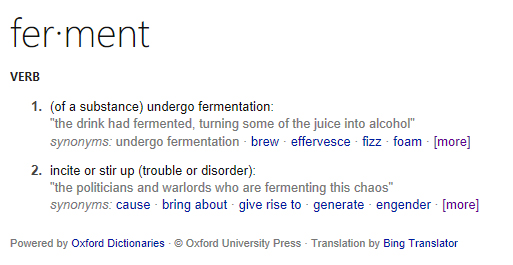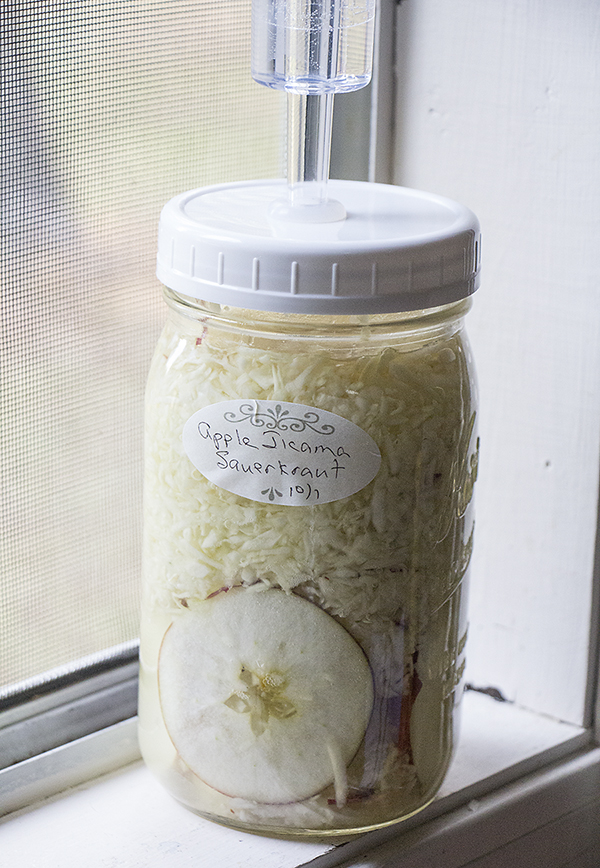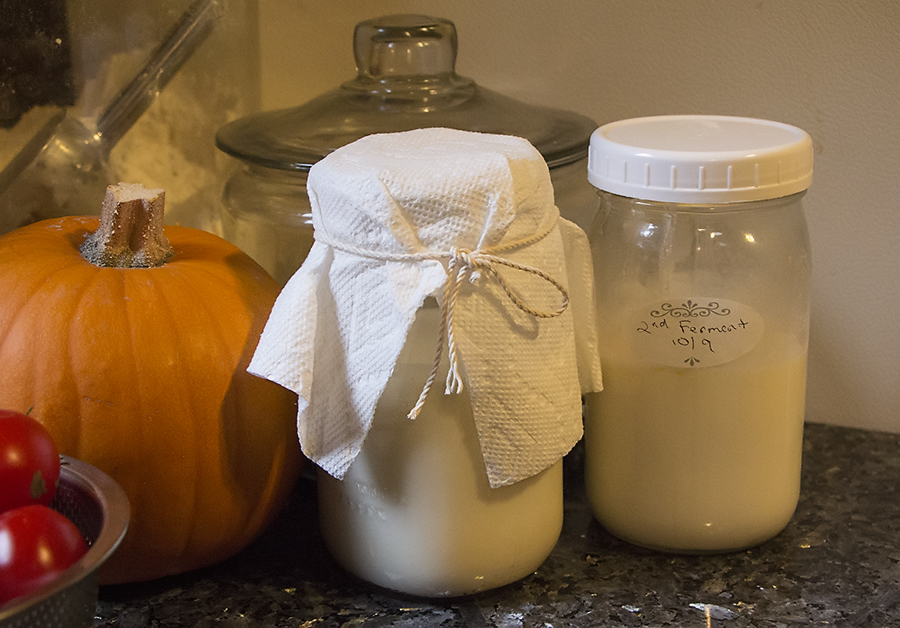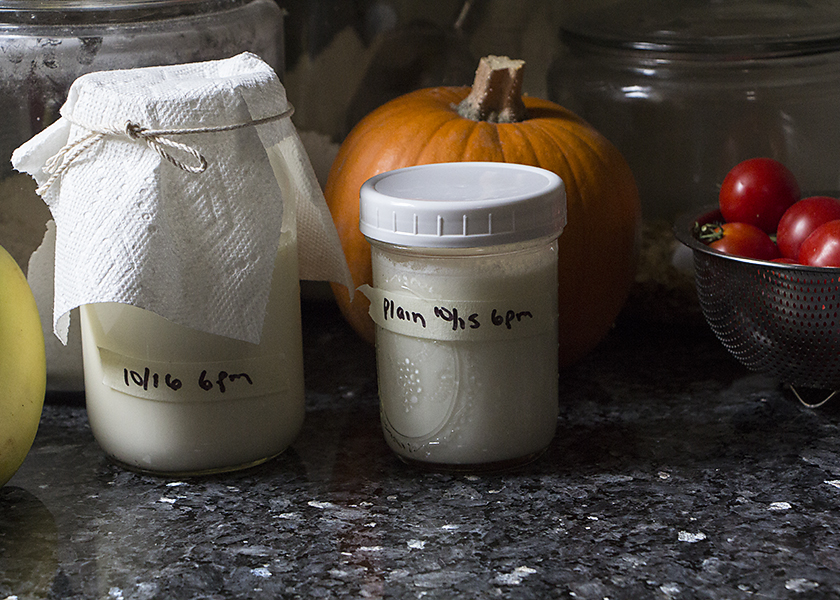Fermenting
When I write a post, I typically have an idea of where it is going. But sometimes, things go sideways and I end up going down a different road than I planned.
Anyway.
The subject IS fermenting … of food, but I decided to lookup up “ferment” and the following came back from the Oxford Dictionary site:
Hee… #2 is kind of au currant funny or sad. Actually sad.
But on to the food kind of fermenting.
Two weeks ago, in the Sunday in the kitchen post, I showed the start of cabbage, apple and jicama fermenting, aka sauerkraut.
Last Sunday, the mix was bubbly and ready for tasting.
YUM! Much better flavor with the cultures and the apple-jicama additions than with just cabbage/water/salt. I will be happily making my own ‘kraut from now on.
I learned about this recipe on Donna Schwenk’s Cultured Food Life via a post on Mel’s Kitchen Cafe titled Mel’s Kitchen Café: Let’s talk about Kefir.
I’ve seen Kefir in the store and from the containers, it looked like it was just liquid yogurt and that did not appeal. But, after Mel’s post and a dive into Donna Schwenk’s Cultured Food Life, I was motivated to try making Kefir.
I had an opportunity to get grains from a friend, but they needed to be sent and meanwhile I tried the store variety. I tried a number of brands and my favorite was a raw goat milk version. Still, according to further reading, homemade from live grains along with a second ferment, was reputed to have the most good bacteria as well as the most additional nutrients AND best taste.
The kefir grains arrived about ten days ago and I’ve since been making my own kefir.
Taste of homemade from grains is 100% better than any of the store brands I tried. The homemade kefir is sweet-sour-tangy-fizzy good.
Mel’s post has a link to a site that speaks about how good kefir is for dogs as well. Further research shows that it is also good for cats. Bear and Auggie are both getting kefir along with me. Since Bear’s Labor Day weekend ER visit and subsequent diet adjustment AND his history with a bit of a sensitive stomach … at any rate, the change in his diet to rice-chicken-pumpkin with kefir and also a senior multi-vitamin (from whole food) … he is acting like a young dog. He seems much more comfortable, is getting up and down easier and overall just moving better. Kefir or diet or recovery from whatever … don’t know, but we are all doing the kefir!
What is kefir? It is fermented milk. More info here: Donna Schwenk’s Cultured Food Life: What is Kefir
The process to make kefir is darn simple:
The grains go in milk. They sit loosely covered for 24 hours. To second ferment, strain out the grains and let the kefir milk sit at room temperature for another 8-12 hours. Then into the refrigerator. The strained grains go into a new bit of milk and the cycle continues. The grains grow in volume with each round, so ultimately they can be given to someone who wants/needs them or the grains can be used in a smoothie or given to pets.
You can add flavors to the second ferment. I make some plain and some I add orange peel. The plain is for Bear and Auggie. I use the orange peel version in smoothies as well as a nighttime brew of orange peel kefir, turmeric and black pepper (turmeric needs fat and black pepper to best be used by the body).
Bottomline, I am fermenting cabbage into sauerkraut and milk into kefir for Bear, Auggie and me.




